Hitler
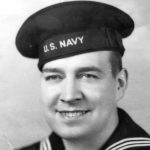 When we think of the name Hitler, most of us think of the vicious dictator who was responsible for the slaughter of as many a 6 million Jewish people, not to mention all the other people he killed in his crazed state of mind. For most of us, hearing the name Hitler brings with it feelings of horror, disgust, and continued shock every time we learn a new fact about Hitler and his Third Reich. Yes, the name Hitler doesn’t usually bring any feelings of…anything good. Well, what I learned today, changed my view of that. You see, not everyone named Hitler was evil, not even everyone named Hitler during World War II, and not even everyone who had the unfortunate…misfortune of being related to Adolf Hitler. You see, for William Patrick Hitler of Liverpool, England, having the name wasn’t the worst part of his situation. William was actually the nephew of Adolf Hitler, the Führer of Nazi Germany. It was a reality that made him almost nauseous. Dealing with that reality would take William on a zigzag path leading to Germany, England, America, and finally the United States Navy. I’m sure that you, like me, thought, “How could the United States Navy allow a nephew of Adolf Hitler to join up, much less to muster out with men sent to fight his uncle.
When we think of the name Hitler, most of us think of the vicious dictator who was responsible for the slaughter of as many a 6 million Jewish people, not to mention all the other people he killed in his crazed state of mind. For most of us, hearing the name Hitler brings with it feelings of horror, disgust, and continued shock every time we learn a new fact about Hitler and his Third Reich. Yes, the name Hitler doesn’t usually bring any feelings of…anything good. Well, what I learned today, changed my view of that. You see, not everyone named Hitler was evil, not even everyone named Hitler during World War II, and not even everyone who had the unfortunate…misfortune of being related to Adolf Hitler. You see, for William Patrick Hitler of Liverpool, England, having the name wasn’t the worst part of his situation. William was actually the nephew of Adolf Hitler, the Führer of Nazi Germany. It was a reality that made him almost nauseous. Dealing with that reality would take William on a zigzag path leading to Germany, England, America, and finally the United States Navy. I’m sure that you, like me, thought, “How could the United States Navy allow a nephew of Adolf Hitler to join up, much less to muster out with men sent to fight his uncle.
Born March 12, 1911, in Liverpool, England, William Hitler was the only child of Bridget Dowling and her Austrian expatriate husband, Alois Hitler Jr, who was the half-brother of Adolf Hitler. In 1914, Alois abandoned his wife and three year old son to go traveling through Europe. The outbreak of World War I prevented him from returning to England, so he settled down in Germany, married again, despite still being married to Dowling, and started a new family. For years, Alois made no attempt to contact his wife and son back in Liverpool, but rather had someone tell Dowling that he was dead. In 1924, the truth came out. Alois was charged with bigamy in Germany, but avoided conviction because Dowling actually interceded on his behalf. That was all she did however. She drew the line, when Alois asked her to send William to Germany for a visit. She told him that she would not let her son visit until he reached his 18th birthday, in 1929. Upon turning 18, William traveled to Germany and reconnected with his father, who took him to a Nazi rally where he saw his Uncle Adolf, leader of the rising National Socialist (Nazi) Party. William visited Germany again in 1930, this time 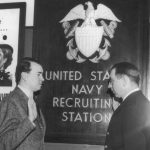 meeting his uncle in person and receiving an autographed photo from him.
meeting his uncle in person and receiving an autographed photo from him.
I’m sure that William thought that his relationship with his uncle would be something that would advance his journalism career, but Hitler didn’t want anyone to know what he was doing. William’s articles about his Uncle Adolf Hitler, only served to be the beginning of being blackballed from everything to do with Adolf Hitler, and his disgust with Adolf Hitler and his insane ways. Hitler called William to Berlin, and reportedly ordered him to retract the articles. Now William saw a totally different side of his uncle…describing it as a “wild-eyed and tearful” outburst. Apparently Hitler even threatened to kill himself if William ever again published anything about his personal life. Now, William became persona non grata in England. He was fired from his job in 1932. Unable to find other employment in his homeland, he decided to look for work in Germany. Perhaps his increasingly influential uncle could be persuaded to help, but no warm welcome awaited in Germany. According to William, whose July 4, 1939 article for Look magazine, “Why I Hate My Uncle,” is the sole source on his dealings with his uncle Adolf Hitler, who sent William a letter during his visit, denying they were relatives. Shortly afterward, William’s father sent him back to England. I guess he was persona non grata with his dad too.
William tried using his relationship to Hitler to obtain a job in Germany, and was successful, but when he tried to send money to his mother, he was informed that Hitler would not allow it…even for family. William began to see a much more evil side of his uncle. Eventually, he left Germany and went back to England, but found that he was not welcome there either. He and his mother moved to the United States, where his relationship again caused him problems. Finally, in 1942, William wrote directly to President Franklin D. Roosevelt, begging to be allowed to serve in the US military. “I am one of many, but can render service to this great cause,” he wrote. FDR passed the letter on to FBI Director J. Edgar Hoover, who looked into William’s background and finally cleared him for military service. Sworn into the US Navy in New York City on March 6, 1944, William Hitler went on to serve three years as a pharmacist’s mate, receiving the Purple Heart for a wound he suffered. He was 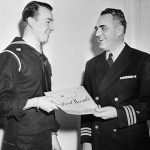 discharged in 1947.
discharged in 1947.
Finally tired of the attention his controversial surname attracted, William changed it to Stuart-Houston after returning to the civilian world. He married German-born Phyllis Jean-Jacques, and the couple settled in Patchogue on New York’s Long Island, where they had four children, the first of whom bore the surprising middle name of Adolf. William ran a blood analysis lab, Brookhaven Laboratories, in his family’s home. William Stuart-Houston died on July 14, 1987, and was buried next to his late mother in Coram, New York. His children did not produce any children of their own…and so ended the line.
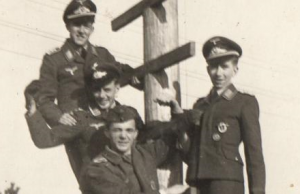 New York City…a place as glamorous as any city in the world, the financial center of the world…and a target. Most of us know about the attacks on the World Trade Center in 1993, and again on September 11, 2001, but there was another attack that was planned for New York City, and in the end…foiled. This attack is most likely one you don’t recall…in fact, I think very few people even knew about it. The United States has enemies, as most nations do, and one of the best know enemies of the United States was Adolf Hitler.
New York City…a place as glamorous as any city in the world, the financial center of the world…and a target. Most of us know about the attacks on the World Trade Center in 1993, and again on September 11, 2001, but there was another attack that was planned for New York City, and in the end…foiled. This attack is most likely one you don’t recall…in fact, I think very few people even knew about it. The United States has enemies, as most nations do, and one of the best know enemies of the United States was Adolf Hitler.
According to an article I read recently, two men. Laureano Clavero and Pere Cardona, interviewed a Nazi pilot from World War II, who passed away in 2013. According to their research and their interview, the two claimed that they had proven the planned attack was real in an interview as they promoted their new book, The Diary of Peter Brill, a Nazi pilot during World War Two. In the interview, Peter Brill, who has been dubbed The Last Luftwaffe Pilot, claimed that Hitler was developing a plan to send a huge bomber from Germany to the United States. The New York mission has long been considered a myth, but Clavero and Cardona insist Brill admitted his involvement when they interviewed him. They claimed that Brill was a part of the secret project.

Clavero came across Brill and his history in 2010, when he was investigating the crash of two German bombers in the Pyrenees during the conflict. I’m always amazed at how often looking for one piece of information leads to another discovery. Brill agreed to give the authors an interview, and told them that he had been asked to take part in a secret mission to cross the Atlantic and launch the huge bombardment. While Brill was not specific, the two authors believe the project was convened in 1943, with Hitler’s enthusiastic support. The huge Heinkel plane was to be modified to allow it to fly 12,000 miles…the distance from Berlin to New York and back.
Brill and five others received top-secret training in the Polish city of Thorn, where they learned to fly at high altitude. They had to brave the frequent fires in the bomber’s engines. Before long, it became clear that the Heinkel was incapable of flying to New York and back. The authors claim that, when it became clear that the “Junker” could not fly such a long distance, the German engineers toyed with various workarounds, including  the creation of a halfway house and the coupling of the bomber to a Mescherschmitt. Nevertheless, it soon became clear to everyone that the mission would have to be scrapped, as there were more pressing difficulties taking precedence. “What is certain is that they were close to realizing their objective, but all the crazy dreams of Hitler were left to one side after the battle of Stalingrad,” Cardona said. “They were pushed aside for the day-to-day problems.” Clavero and Cardona have written their new book using the interviews given by Brill, and the memoirs gifted to them by his family when he died. The book sounds very interesting, and I, for one, plan to read about this…almost attack on New York City.
the creation of a halfway house and the coupling of the bomber to a Mescherschmitt. Nevertheless, it soon became clear to everyone that the mission would have to be scrapped, as there were more pressing difficulties taking precedence. “What is certain is that they were close to realizing their objective, but all the crazy dreams of Hitler were left to one side after the battle of Stalingrad,” Cardona said. “They were pushed aside for the day-to-day problems.” Clavero and Cardona have written their new book using the interviews given by Brill, and the memoirs gifted to them by his family when he died. The book sounds very interesting, and I, for one, plan to read about this…almost attack on New York City.

 In the days leading up to America’s entrance into World War II, Hitler was becoming more and more volatile. It didn’t take much to set him off. On November 8, he had to move up his scheduled speech in Munich on the anniversary of his 1923 attempted coup in Bavaria because British bombers were on their way to take out a railway yard. Hitler was determined to avenge this daring offensive. The Fuhrer let his bomber pilots know that he was not “willing to let an attack on the capital of the Nazi movement go unpunished.” He immediately set about creating a plan to exact his revenge on Britain. Hitler didn’t wait very long. The chosen city would be Coventry, which is a city in the West Midlands, England…historically part of Warwickshire. The raid was scheduled for November 14, 1940, so Hitler had only 6 days to prepare for what would become the single most concentrated attack on a British city in World War II. Codenamed Moonlight Sonata, the raid lasted for 11 hours and involved nearly 500 Luftwaffe bombers, gathered from airfields all over occupied Europe. It was a brilliant moonlit night, so bright that the traffic could move around on the road without light. The Luftwaffe dropped 500 tons of high explosive, 30,000 incendiaries and 50 landmines. It was also trying out a new weapon, the exploding incendiary. The aim was to knock out Coventry as a major center for war production, but it was more than that. Hitler ordered the raid as revenge for the RAF attack on Munich.
In the days leading up to America’s entrance into World War II, Hitler was becoming more and more volatile. It didn’t take much to set him off. On November 8, he had to move up his scheduled speech in Munich on the anniversary of his 1923 attempted coup in Bavaria because British bombers were on their way to take out a railway yard. Hitler was determined to avenge this daring offensive. The Fuhrer let his bomber pilots know that he was not “willing to let an attack on the capital of the Nazi movement go unpunished.” He immediately set about creating a plan to exact his revenge on Britain. Hitler didn’t wait very long. The chosen city would be Coventry, which is a city in the West Midlands, England…historically part of Warwickshire. The raid was scheduled for November 14, 1940, so Hitler had only 6 days to prepare for what would become the single most concentrated attack on a British city in World War II. Codenamed Moonlight Sonata, the raid lasted for 11 hours and involved nearly 500 Luftwaffe bombers, gathered from airfields all over occupied Europe. It was a brilliant moonlit night, so bright that the traffic could move around on the road without light. The Luftwaffe dropped 500 tons of high explosive, 30,000 incendiaries and 50 landmines. It was also trying out a new weapon, the exploding incendiary. The aim was to knock out Coventry as a major center for war production, but it was more than that. Hitler ordered the raid as revenge for the RAF attack on Munich.
On the appointed day, almost 500 German bombers unleashed Hitler’s fury on the British industrial city, taking out 27 war factories. Of the 568 people killed, more than 400 were burned so badly they could not be identified. Among the more than 60,000 buildings destroyed or severely damaged was the historic Saint Michael’s Cathedral. Coventry lost not only its great mediaeval church of Saint Michael’s, but it was the only English Cathedral to be destroyed in the Second World War. The city also lost its central library and market hall, hundreds of shops and public buildings, and 16th century Palace Yard, where James II had once held court. It is said that the smell and heat of the burning city reached into the cockpits of the German bombers, 6,000 feet above. More than 43,000 homes, just over half the city’s housing stock, were damaged or destroyed in the raid. The fire at the city’s huge Daimler works was one of the biggest of the war in Britain. Up to 150 high explosive bombs and 3,000 incendiaries turned 15 acres of factory buildings into a raging inferno. The people of the city were so traumatized, that hundreds wandered the streets in a daze and little children were seen trying to burrow their way through solid brick walls to escape the terrifying noise.
King George VI is said to have wept as he stood in the ruins of the burned out Cathedral, surveying the destruction. One man recalled being pursued down a street by a knee-high river of boiling butter from a blazing dairy. At one point during the night, an abandoned tram was blown over a house and into a garden. It landed with its windows still intact. At midday the next day in Coventry, it was as warm as spring and almost dark because of the effects of the firestorms. The official death toll from the night was 554, but the real figure could have been much higher with many people unaccounted for. As help poured in the next day, demolition crews had to be prevented from pulling down the Cathedral tower. They didn’t realize it had been leaning for at least 100 years. On the day of the mass funerals, fighter patrols were sent up into the skies above the city. It was thought that the Germans might try to bomb the cemetery. Following the raid, Nazi 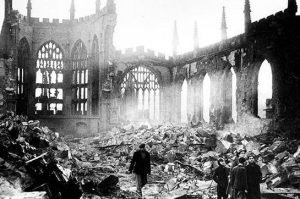
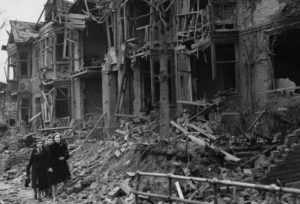 propagandists coined a new word in Germany…Koventrieren, meaning to raze a city to the ground…to Coventrate passed into the German language, meaning “to annihilate or reduce to rubble.” The raid was intended to bring complete hopelessness to Britain, but by 1947, Coventry had adopted Kiel, its first German twin city, and Dresden followed in 1956. The rebuilt Cathedral stands for international peace and reconciliation. Coventry is now the 9th largest city in England.
propagandists coined a new word in Germany…Koventrieren, meaning to raze a city to the ground…to Coventrate passed into the German language, meaning “to annihilate or reduce to rubble.” The raid was intended to bring complete hopelessness to Britain, but by 1947, Coventry had adopted Kiel, its first German twin city, and Dresden followed in 1956. The rebuilt Cathedral stands for international peace and reconciliation. Coventry is now the 9th largest city in England.
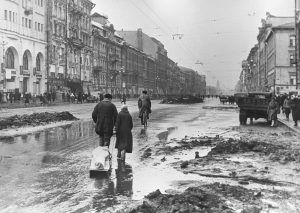 When an evil empire, such as Hitler’s regime in Nazi Germany, decides to rule the world, they begin to take over neighboring nations…by any means possible. If the nation is too weak to fight, it is easy, but if the nation can fight it becomes much harder to succeed. Nevertheless, they always seem to find a way, if they are determined enough. And Hitler was nothing, if not determined. The Nazis invaded the Soviet Union in late September, and surrounded Leningrad soon after. The months that followed, found the people of the city trying to establish supply lines from the Soviet interior and attempting to evacuate its citizens. It was a tough process and they often found themselves using a hazardous “ice and water road” across Lake Ladoga. A successful land corridor was finally created in January 1943, and the Red Army finally managed to drive off the Germans the following year. Nevertheless, all that took time, and in the end, the siege lasted nearly 900 days and resulted in the deaths of more than 1 million Soviet civilians.
When an evil empire, such as Hitler’s regime in Nazi Germany, decides to rule the world, they begin to take over neighboring nations…by any means possible. If the nation is too weak to fight, it is easy, but if the nation can fight it becomes much harder to succeed. Nevertheless, they always seem to find a way, if they are determined enough. And Hitler was nothing, if not determined. The Nazis invaded the Soviet Union in late September, and surrounded Leningrad soon after. The months that followed, found the people of the city trying to establish supply lines from the Soviet interior and attempting to evacuate its citizens. It was a tough process and they often found themselves using a hazardous “ice and water road” across Lake Ladoga. A successful land corridor was finally created in January 1943, and the Red Army finally managed to drive off the Germans the following year. Nevertheless, all that took time, and in the end, the siege lasted nearly 900 days and resulted in the deaths of more than 1 million Soviet civilians.
The German and Finnish forces besieged Lenin’s namesake city after their spectacular initial advance during Operation Barbarossa in the summer of 1941. Nevertheless, it was not going to be an easy task to bring the Soviet people into submission. A German Army Group struggled against stubborn Soviet resistance to isolate and seize the city before the onset of winter. The fighting was heaviest during August. German forces reached the city’s suburbs and the shores of Lake Ladoga, severing Soviet ground communications with the city. In 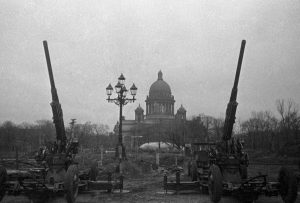 November 1941, Soviet forces repelled a renewed German offensive and clung to tenuous resupply routes across the frozen waters of Lake Ladoga. After that, German and Soviet strategic attention shifted to other more critical sectors of the Eastern Front, and Leningrad…its defending forces and its large civilian population…endured an 880 day siege of unparalleled severity and hardship. I simply can’t imagine the cruelty of a regime that would let a million people starve to death to obtain power. Despite desperate Soviet use of an “ice and water road” across Lake Ladoga to resupply its three million encircled soldiers and civilians and to evacuate one million civilians, over one million civilians perished during that bitter siege. Another 300,000 Soviet soldiers died defending the city or attempting to end the siege. In January 1943, Soviet forces opened a narrow land corridor into the city through which vital rations and supplies again flowed. But it was not until January 1944, that the Red Army successes in other front sectors enable the Soviets to end the siege. By this time, the besieging German forces were so weak that renewed Soviet attacks drove them away from the city and from Soviet soil. Determination simply wasn’t enough to win that victory for Hitler.
November 1941, Soviet forces repelled a renewed German offensive and clung to tenuous resupply routes across the frozen waters of Lake Ladoga. After that, German and Soviet strategic attention shifted to other more critical sectors of the Eastern Front, and Leningrad…its defending forces and its large civilian population…endured an 880 day siege of unparalleled severity and hardship. I simply can’t imagine the cruelty of a regime that would let a million people starve to death to obtain power. Despite desperate Soviet use of an “ice and water road” across Lake Ladoga to resupply its three million encircled soldiers and civilians and to evacuate one million civilians, over one million civilians perished during that bitter siege. Another 300,000 Soviet soldiers died defending the city or attempting to end the siege. In January 1943, Soviet forces opened a narrow land corridor into the city through which vital rations and supplies again flowed. But it was not until January 1944, that the Red Army successes in other front sectors enable the Soviets to end the siege. By this time, the besieging German forces were so weak that renewed Soviet attacks drove them away from the city and from Soviet soil. Determination simply wasn’t enough to win that victory for Hitler.
After November 1941, possession of Leningrad held only symbolic significance. In holding the “ice and water road” the Soviets were able to bring in enough supplies to stave of the ongoing starvation, so the siege has a 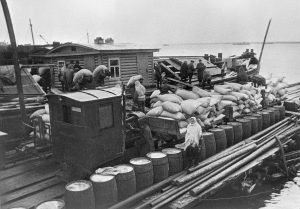 little less effect. The Germans maintained their siege with a single army, and defending Soviet forces numbered less than 15 percent of their total strength on the German-Soviet front. The Leningrad sector was clearly of secondary importance, and the Soviets raised the siege only after the fate of German arms had been decided in more critical front sectors. Despite its diminished strategic significance, the suffering and sacrifices of Leningrad’s dwindling population and defending forces inspired the Soviet war effort as a whole. No nation can lose that many people and not feel its impact. The siege ended on January 27, 1944, but I don’t think the people felt that it was such a big victory, considering the loss of life.
little less effect. The Germans maintained their siege with a single army, and defending Soviet forces numbered less than 15 percent of their total strength on the German-Soviet front. The Leningrad sector was clearly of secondary importance, and the Soviets raised the siege only after the fate of German arms had been decided in more critical front sectors. Despite its diminished strategic significance, the suffering and sacrifices of Leningrad’s dwindling population and defending forces inspired the Soviet war effort as a whole. No nation can lose that many people and not feel its impact. The siege ended on January 27, 1944, but I don’t think the people felt that it was such a big victory, considering the loss of life.
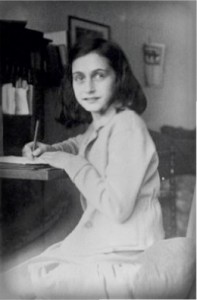 Hitler was an insanly, evil ruler, and he hated the Jewish people…that is a known fact. It wasn’t anything they did, it was just his own twisted mind. That said, the Jewish people found themselves hiding in order to save their lives. Anne Frank was one of the most famous of those persecuted Jewish people, most likely because of her diary, which was published by her father following her death at the Bergen-Belsen concentration camp in Germany, and his release following the liberation of the camps. Annelies Marie Frank was born in Frankfurt, Germany, on June 12, 1929. She was the second daughter of Otto Frank and Edith Frank-Hollander, both of Jewish families that had lived in Germany for centuries. With the rise of Nazi leader Adolf Hitler in 1933, Otto moved his family to Amsterdam to escape the escalating Nazi persecution of Jews. In Holland, he ran a successful spice and jam business. Anne attended a Montessori school with other middle-class Dutch children, but with the German invasion of the Netherlands in 1940 she was forced to transfer to a Jewish school. In 1942, Otto began preparing a hiding place in an annex of his warehouse on the Prinsengracht Canal in Amsterdam. It was a wise move, given what was coming. The family moved in on July 15, 1942, when Anne’s sister, Margot received a letter telling her to report to the labor camps in Germany. Knowing what that meant, the family took refuge in the secret hiding place they had prepared. This would be their home for the next 25 months.
Hitler was an insanly, evil ruler, and he hated the Jewish people…that is a known fact. It wasn’t anything they did, it was just his own twisted mind. That said, the Jewish people found themselves hiding in order to save their lives. Anne Frank was one of the most famous of those persecuted Jewish people, most likely because of her diary, which was published by her father following her death at the Bergen-Belsen concentration camp in Germany, and his release following the liberation of the camps. Annelies Marie Frank was born in Frankfurt, Germany, on June 12, 1929. She was the second daughter of Otto Frank and Edith Frank-Hollander, both of Jewish families that had lived in Germany for centuries. With the rise of Nazi leader Adolf Hitler in 1933, Otto moved his family to Amsterdam to escape the escalating Nazi persecution of Jews. In Holland, he ran a successful spice and jam business. Anne attended a Montessori school with other middle-class Dutch children, but with the German invasion of the Netherlands in 1940 she was forced to transfer to a Jewish school. In 1942, Otto began preparing a hiding place in an annex of his warehouse on the Prinsengracht Canal in Amsterdam. It was a wise move, given what was coming. The family moved in on July 15, 1942, when Anne’s sister, Margot received a letter telling her to report to the labor camps in Germany. Knowing what that meant, the family took refuge in the secret hiding place they had prepared. This would be their home for the next 25 months.
Nineteen months earlier, on December 1, 1940, Anne’s father Otto Frank moved the offices of the spice and gelling companies he worked for, Opekta and Pectacon, from an address on Singel canal to Prinsengracht 263. The warehouse on Prinsengracht Canal, where Otto Frank ran his business, was a perfect place to create a safe room for his family, should the need ever arise. On July 15, 1942, the need arose. The ground floor of the building consisted of three sections. The front was the goods and dispatch entrance, basically the storefront. Behind the storefront  was the middle section where the spice mills were located. At the rear, which was the ground floor of the annex, was the warehouse where the goods were packed for distribution. On the first floor above were the offices of Frank’s employees…Miep Gies, Bep Voskuijl (known in Anne Frank’s diary as Elli) and Johannes Kleiman were in the front office. Victor Kugler in the middle and Otto Frank in the rear office above the warehouse and below the floors which would later hide him and his family for two years until their betrayal to the Nazi authorities. The Achterhuis (Dutch for “back house”) or Secret Annex…as it was called in The Diary of a Young Girl, an English translation of the diary…is the rear extension of the building. It was concealed from view by houses on all four sides of a quadrangle. Its secluded position made it an ideal hiding place for Otto Frank, his wife Edith, two daughters, Margot and Anne, and four other Jews seeking refuge from Nazi persecution. Though the total amount of floor space in the inhabited rooms came to only about 500 square feet, Anne Frank wrote in her diary that it was relatively luxurious compared to other hiding places they had heard about. Those in hiding had been so careful. The entrance to the secret annex was hidden by a hinged bookcase, and former employees of Otto and other Dutch friends delivered them food and supplies procured at high risk. Anne and the others lived in rooms with blacked-out windows, and never flushed the toilet during the day out of fear that their presence would be detected. In June 1944, Anne’s spirits were raised by the Allied landing at Normandy, and she was hopeful that the long-awaited liberation of Holland would soon begin.
was the middle section where the spice mills were located. At the rear, which was the ground floor of the annex, was the warehouse where the goods were packed for distribution. On the first floor above were the offices of Frank’s employees…Miep Gies, Bep Voskuijl (known in Anne Frank’s diary as Elli) and Johannes Kleiman were in the front office. Victor Kugler in the middle and Otto Frank in the rear office above the warehouse and below the floors which would later hide him and his family for two years until their betrayal to the Nazi authorities. The Achterhuis (Dutch for “back house”) or Secret Annex…as it was called in The Diary of a Young Girl, an English translation of the diary…is the rear extension of the building. It was concealed from view by houses on all four sides of a quadrangle. Its secluded position made it an ideal hiding place for Otto Frank, his wife Edith, two daughters, Margot and Anne, and four other Jews seeking refuge from Nazi persecution. Though the total amount of floor space in the inhabited rooms came to only about 500 square feet, Anne Frank wrote in her diary that it was relatively luxurious compared to other hiding places they had heard about. Those in hiding had been so careful. The entrance to the secret annex was hidden by a hinged bookcase, and former employees of Otto and other Dutch friends delivered them food and supplies procured at high risk. Anne and the others lived in rooms with blacked-out windows, and never flushed the toilet during the day out of fear that their presence would be detected. In June 1944, Anne’s spirits were raised by the Allied landing at Normandy, and she was hopeful that the long-awaited liberation of Holland would soon begin.
The family remained hidden here for two years and one month, praying that the war would end, and Hitler would be defeated before they were found. They stayed there until they were anonymously betrayed to the Nazi authorities by a Dutch informer, arrested, and deported to their deaths in concentration camps. Of the hidden group, only Otto Frank survived the concentration death camps. It was on this day, August 4, 1944, that time ran out for the family and friends in the secret annex. The Nazi Gestapo showed up at the warehouse,  and they knew everything they needed to know about how to find the group of Jews in the secluded hiding place. They went right to the bookcase door and charged into the secret rooms. I can only imagine the terror that followed…the screaming, the running, the fear of knowing what was probably coming next. They were sent to a concentration camp in Holland, and in September Anne and most of the others were shipped to the Auschwitz death camp in Poland. In the fall of 1944, with the Soviet liberation of Poland underway, Anne was moved with her sister Margot to the Bergen-Belsen concentration camp in Germany. Suffering under the deplorable conditions of the camp, the two sisters caught typhus and died in early March 1945. The camp was liberated by the British less than two months later. Otto Frank was the only one of the 10 to survive the Nazi death camps. Two short months…or six short months, if you look at when they were captured. What a waste of a life or lives, and all because of the insanity of one man.
and they knew everything they needed to know about how to find the group of Jews in the secluded hiding place. They went right to the bookcase door and charged into the secret rooms. I can only imagine the terror that followed…the screaming, the running, the fear of knowing what was probably coming next. They were sent to a concentration camp in Holland, and in September Anne and most of the others were shipped to the Auschwitz death camp in Poland. In the fall of 1944, with the Soviet liberation of Poland underway, Anne was moved with her sister Margot to the Bergen-Belsen concentration camp in Germany. Suffering under the deplorable conditions of the camp, the two sisters caught typhus and died in early March 1945. The camp was liberated by the British less than two months later. Otto Frank was the only one of the 10 to survive the Nazi death camps. Two short months…or six short months, if you look at when they were captured. What a waste of a life or lives, and all because of the insanity of one man.
 When we think of Nazi Germany, Hitler always comes to mind. We all know that he was an insane, murderous dictator, and that the people of Germany were afraid to stand up to him and his army. We know that he hated the Jewish people, even though he was part Jewish, and that later he also hated the gypsies. His hatred grew so strong that he enslaved and killed many thousands of these people, for no crime other than that they were Jewish or gypsies. During the years of Hitler’s reign, there were those who followed him because they agreed with him, those who just weren’t sure what they believed, and those who disagreed, but dared not oppose him. Children were often taken from their families and raised to be good Nazis. I’m sure this added to the number of people who agreed with Hitler, because it is a well know fact that children learn what they live.
When we think of Nazi Germany, Hitler always comes to mind. We all know that he was an insane, murderous dictator, and that the people of Germany were afraid to stand up to him and his army. We know that he hated the Jewish people, even though he was part Jewish, and that later he also hated the gypsies. His hatred grew so strong that he enslaved and killed many thousands of these people, for no crime other than that they were Jewish or gypsies. During the years of Hitler’s reign, there were those who followed him because they agreed with him, those who just weren’t sure what they believed, and those who disagreed, but dared not oppose him. Children were often taken from their families and raised to be good Nazis. I’m sure this added to the number of people who agreed with Hitler, because it is a well know fact that children learn what they live.
Nevertheless, while many people think that all the German people agreed with Hitler’s ways, but in reality, that was not the case. As World War II started to turn against the Germans, and Hitler’s atrocities grew, growing numbers of Germans, both military and civilian…began conspiring to assassinate their leader. It was assumed that the masses were unlikely to turn on the man in whose hands they had placed their lives and future. That said, they knew that it was up to men close to Hitler…German officers, to remove him. Leadership of the plot fell to Claus von Stauffenberg, newly promoted to colonel and chief of staff to the commander of the army reserve. His position gave him access to Hitler’s headquarters at Berchtesgaden and Rustenburg.
Stauffenberg had served in the German army since 1926. He was a staff officer in the campaign against the Soviet Union. He became disgusted at his fellow countrymen’s vicious treatment of Jews and Soviet prisoners. He requested to be transferred to North Africa, where he lost his left eye, right hand, and two fingers of his left hand. After recovering from his injuries, Stauffenberg became determined to see Hitler removed from power by 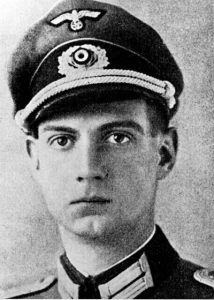 any means necessary. He traveled to Berchtesgaden on July 3 and met with a fellow army officer, Major General Helmuth Stieff, who gave him a bomb with a silent fuse that was small enough to be hidden in a briefcase. On July 11, 1944, Stauffenberg was summoned to Berchtesgaden to report to Hitler on the current military situation. He planned to use the bomb on July 15, but at the last minute, Hitler was called away to his headquarters at Rustenburg, in East Prussia. Stauffenberg was asked to follow him there. On July 16, a meeting took place between Stauffenberg and Colonel Caesar von Hofacker, who was another conspirator, in the Berlin suburb of Wannsee. Hofacker informed Stauffenberg that German defenses had collapsed at Normandy, and the tide had turned against them in the West. The assassination attempt was postponed until July 20, at Rustenburg. In the end, it wasn’t an assassin’s bomb that ended Hitler’s reign, but rather his own hands. Nevertheless, it wasn’t because the German people wanted him to continue to be their leader, because they definitely did not.
any means necessary. He traveled to Berchtesgaden on July 3 and met with a fellow army officer, Major General Helmuth Stieff, who gave him a bomb with a silent fuse that was small enough to be hidden in a briefcase. On July 11, 1944, Stauffenberg was summoned to Berchtesgaden to report to Hitler on the current military situation. He planned to use the bomb on July 15, but at the last minute, Hitler was called away to his headquarters at Rustenburg, in East Prussia. Stauffenberg was asked to follow him there. On July 16, a meeting took place between Stauffenberg and Colonel Caesar von Hofacker, who was another conspirator, in the Berlin suburb of Wannsee. Hofacker informed Stauffenberg that German defenses had collapsed at Normandy, and the tide had turned against them in the West. The assassination attempt was postponed until July 20, at Rustenburg. In the end, it wasn’t an assassin’s bomb that ended Hitler’s reign, but rather his own hands. Nevertheless, it wasn’t because the German people wanted him to continue to be their leader, because they definitely did not.
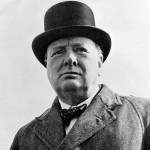
 In a war, sometimes the best thing that can be done is to retreat, but that is not always easy to do. When the enemy is closing in and there seems no way of escape. Sometimes, a way of escape seems to come together in such a way that it almost seems miraculous…or maybe that is the only real explanation…a miracle. Such seemed to be the case with Britain both in Dunkirk, France, called Operation Dynamo, and again from Cherbourg, Saint Malo, Brest, and Nantes, dubbed Operation Aerial. The evacuation from Dunkirk, was most likely the largest of its kind, or at least up to that date. I suppose there might have been others since then, but I am not aware of any. During the evacuation of Dunkirk, the British managed to evacuate 338,226 soldiers…and almost unheard of amount of men were saved, by a coordinated effort using 860 boats. During Operation Ariel, another 191,870 troops were rescued, bringing the total of military and civilian personnel returned to Britain during the Battle of France to 558,032, including 368,491 British troops.
In a war, sometimes the best thing that can be done is to retreat, but that is not always easy to do. When the enemy is closing in and there seems no way of escape. Sometimes, a way of escape seems to come together in such a way that it almost seems miraculous…or maybe that is the only real explanation…a miracle. Such seemed to be the case with Britain both in Dunkirk, France, called Operation Dynamo, and again from Cherbourg, Saint Malo, Brest, and Nantes, dubbed Operation Aerial. The evacuation from Dunkirk, was most likely the largest of its kind, or at least up to that date. I suppose there might have been others since then, but I am not aware of any. During the evacuation of Dunkirk, the British managed to evacuate 338,226 soldiers…and almost unheard of amount of men were saved, by a coordinated effort using 860 boats. During Operation Ariel, another 191,870 troops were rescued, bringing the total of military and civilian personnel returned to Britain during the Battle of France to 558,032, including 368,491 British troops.
Operation Aerial began on June 15, 1940 and ended on June 25, 1940. Following the military collapse in the Battle of France against Nazi Germany, it became evident that Allied soldiers and civilians were in grave danger. With two-thirds of France now occupied by German troops, those British and Allied troops that had not participated in Operation Dynamo, the evacuation of Dunkirk, were shipped home, but there remained a concern for the areas from Cherbourg, St. Malo, Brest, and Nantes. While these men were not under the immediate threat of assault, as at Dunkirk, they were by no means safe, so Brits, Poles, and Canadian troops were rescued from occupied territory by boats sent from Britain. Meanwhile, British Prime Minister Winston Churchill offered words of encouragement in a broadcast to the nation, “Whatever has happened in France…we shall defend our island home, and with the British Empire we shall fight on unconquerable until the curse of Hitler is lifted.” This was his way of promising that Britain would never fall under Nazi rule.
Operation Aerial was split into two sectors. Admiral James, based at Portsmouth, was to control the evacuation from Cherbourg and St Malo, while Admiral Dunbar-Nasmith, the commander-in-chief of the Western Approaches, based at Plymouth, would control the evacuation from Brest, St. Nazaire and La Pallice. Eventually this western evacuation would extend to include the ports on the Gironde estuary, Bayonne and St Jean-de-Luz. Once the people were on board, I’m sure they thought they were finally safe, but that was not necessarily the case. The Germans attacked the rescue boats. Among those rescued from the shores of France, were 5,000 soldiers and French civilians on board the ocean liner Lancastria, which had picked them up at St. Nazaire. Germans bombers sunk the liner on June 17, 1940, and 3,000 passengers drowned. Churchill ordered that news of the Lancastria not be broadcast in Britain, fearing the effect it would have on public morale, since everyone was already worried about a possible German invasion now that only a channel separated them. The British public would eventually find out, but not for another six weeks, when the news broke in the United States. They would also receive the good news that Hitler had no immediate plans for an invasion of the British isle, “being well aware of the difficulties involved in such an operation,” reported the German High Command.
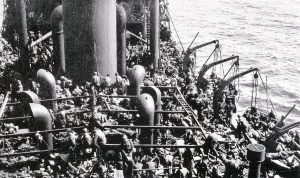

In the end, the evacuations dubbed Operation Dynamo and Operation Aerial, were successful, in that most of those who were evacuated made it home. I’m sure that the retreats did not feel like a success or a victory to the soldiers fighting in the Battle of France, but I am also sure that they were thankful to be among those who made it home. They would live to fight another day in the horrendous war that was World War II.
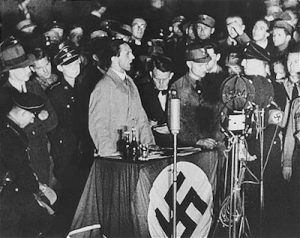 One of the best ways to form a dictatorship is to suppress knowledge. That’s one reason that propaganda is so important. When the people only hear what the government wants them to, they tend to become compliant…or at least that’s the theory. When Adolf Hitler was elected to office, he was the people’s choice, but they had no idea just how evil he was and how long they would be stuck with him. With the end of democracy, Germany became a one-party dictatorship. The Nazis began a massive propaganda campaign to win the loyalty and cooperation of Germans. The Nazi Propaganda Ministry, directed by Dr Joseph Goebbels, took control of all forms of communication in Germany…newspapers, magazines, books, public meetings, and rallies, art, music, movies, and radio. Viewpoints in any way threatening to Nazi beliefs or to the regime were censored or eliminated from all media. The German people were isolated from the outside world, and while they did not like it, the government became their only source of information.
One of the best ways to form a dictatorship is to suppress knowledge. That’s one reason that propaganda is so important. When the people only hear what the government wants them to, they tend to become compliant…or at least that’s the theory. When Adolf Hitler was elected to office, he was the people’s choice, but they had no idea just how evil he was and how long they would be stuck with him. With the end of democracy, Germany became a one-party dictatorship. The Nazis began a massive propaganda campaign to win the loyalty and cooperation of Germans. The Nazi Propaganda Ministry, directed by Dr Joseph Goebbels, took control of all forms of communication in Germany…newspapers, magazines, books, public meetings, and rallies, art, music, movies, and radio. Viewpoints in any way threatening to Nazi beliefs or to the regime were censored or eliminated from all media. The German people were isolated from the outside world, and while they did not like it, the government became their only source of information.
Germany was now led by a self-educated, high school drop-out named Adolf Hitler, who was by nature strongly anti-intellectual. For Hitler, the reawakening of the long-dormant Germanic spirit, with its racial and militaristic 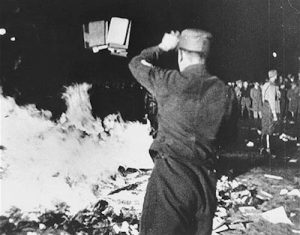 qualities, was far more important than any traditional notions of learning. Books and writings by such authors as Henri Barbusse, Franz Boas, John Dos Passos, Albert Einstein, Lion Feuchtwanger, Friedrich Förster, Sigmund Freud, John Galsworthy, André Gide, Ernst Glaeser, Maxim Gorki, Werner Hegemann, Ernest Hemingway, Erich Kästner, Helen Keller, Alfred Kerr, Jack London, Emil Ludwig, Heinrich Mann, Thomas Mann, Karl Marx, Hugo Preuss, Marcel Proust, Erich Maria Remarque, Walther Rathenau, Margaret Sanger, Arthur Schnitzler, Upton Sinclair, Kurt Tucholsky, Jakob Wassermann, H.G. Wells, Theodor Wolff, Emilé Zola, Arnold Zweig, and Stefan Zweig, were suddenly unGerman. Their books were pulled from libraries and schools. Then, on the night of May 10, 1933, an event unseen in Europe since the Middle Ages occurred as German students from universities once regarded as among the finest in the world, gathered in Berlin to burn books with unGerman ideas. It was the Nazi burning of knowledge. Students can be very impressionable, and easily lead, and these students played right into Hitler’s hand.
qualities, was far more important than any traditional notions of learning. Books and writings by such authors as Henri Barbusse, Franz Boas, John Dos Passos, Albert Einstein, Lion Feuchtwanger, Friedrich Förster, Sigmund Freud, John Galsworthy, André Gide, Ernst Glaeser, Maxim Gorki, Werner Hegemann, Ernest Hemingway, Erich Kästner, Helen Keller, Alfred Kerr, Jack London, Emil Ludwig, Heinrich Mann, Thomas Mann, Karl Marx, Hugo Preuss, Marcel Proust, Erich Maria Remarque, Walther Rathenau, Margaret Sanger, Arthur Schnitzler, Upton Sinclair, Kurt Tucholsky, Jakob Wassermann, H.G. Wells, Theodor Wolff, Emilé Zola, Arnold Zweig, and Stefan Zweig, were suddenly unGerman. Their books were pulled from libraries and schools. Then, on the night of May 10, 1933, an event unseen in Europe since the Middle Ages occurred as German students from universities once regarded as among the finest in the world, gathered in Berlin to burn books with unGerman ideas. It was the Nazi burning of knowledge. Students can be very impressionable, and easily lead, and these students played right into Hitler’s hand.
The youth-oriented Nazi movement had always attracted a sizable following among university students. Even back in the 1920s they thought Nazism was the wave of the future. They joined the National Socialist 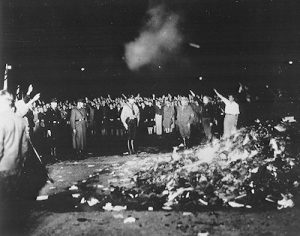 German Students’ League, put on swastika armbands and harassed anti-Nazi teachers. Many formerly reluctant professors were swept along by the outpouring of student enthusiasm that followed Hitler’s seizure of power. Most of the professors eagerly surrendered their intellectual honesty and took the required Nazi oath of allegiance. They also wanted to curry favor with Nazi Party officials in order to grab one of the academic vacancies resulting from the mass expulsion of Jewish professors and deans. The entire education system of a nation changed…almost overnight. As the German-Jewish poet, Heinrich Heine, had declared, a hundred years before the advent of Hitler, “Wherever books are burned, human beings are destined to be burned too.” And so it was in the end.
German Students’ League, put on swastika armbands and harassed anti-Nazi teachers. Many formerly reluctant professors were swept along by the outpouring of student enthusiasm that followed Hitler’s seizure of power. Most of the professors eagerly surrendered their intellectual honesty and took the required Nazi oath of allegiance. They also wanted to curry favor with Nazi Party officials in order to grab one of the academic vacancies resulting from the mass expulsion of Jewish professors and deans. The entire education system of a nation changed…almost overnight. As the German-Jewish poet, Heinrich Heine, had declared, a hundred years before the advent of Hitler, “Wherever books are burned, human beings are destined to be burned too.” And so it was in the end.
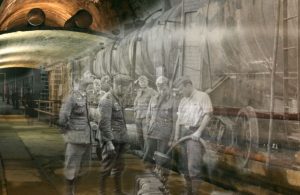
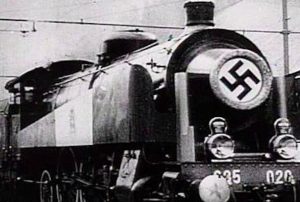 So much is still unknown about the things that Adolf Hitler did, including an apparent “Ghost Train” that was filled with gold and other treasures. According to legend, as the Soviet forces approached in the final days of World War II, an armored train left the city of Breslau (now Wroclaw, Poland) in April 1945 and headed west toward Waldenburg (now Walbrzych). Somewhere along the 40 mile trip, the train and its cargo of gold and other treasures…many of them stolen by the Nazis from Jewish families…vanished into the Owl Mountains, never to be seen again, except in local legend. Stories of the Nazi “Ghost Train” date back some 70 years, although historians haven’t been able to conclusively prove the train ever existed. During the war, Hitler ordered the creation of a network of underground tunnels in the Owl Mountains, which at the time were under German control, as part of a project known as “Riese,” meaning “Giant.” The original rumor of a Nazi train hidden in the mountains came from a Polish miner, who claimed that just after the war, German miners told him they had seen the train being pushed into one of the tunnels.
So much is still unknown about the things that Adolf Hitler did, including an apparent “Ghost Train” that was filled with gold and other treasures. According to legend, as the Soviet forces approached in the final days of World War II, an armored train left the city of Breslau (now Wroclaw, Poland) in April 1945 and headed west toward Waldenburg (now Walbrzych). Somewhere along the 40 mile trip, the train and its cargo of gold and other treasures…many of them stolen by the Nazis from Jewish families…vanished into the Owl Mountains, never to be seen again, except in local legend. Stories of the Nazi “Ghost Train” date back some 70 years, although historians haven’t been able to conclusively prove the train ever existed. During the war, Hitler ordered the creation of a network of underground tunnels in the Owl Mountains, which at the time were under German control, as part of a project known as “Riese,” meaning “Giant.” The original rumor of a Nazi train hidden in the mountains came from a Polish miner, who claimed that just after the war, German miners told him they had seen the train being pushed into one of the tunnels.
In 2015, two anonymous men contacted officials in Walbrzych, a district in southwestern Poland, claiming to know the train’s location and demanding 10 percent of the value of its contents in exchange for leading authorities there. According to Marika Tokarska, an official in the southwestern Polish district of Walbrzych, a law firm representing two men…a Pole and a German, who prefer to remain anonymous…sent her office two letters, offering a description of the train and its contents and claiming to know its location. The documents received from the law firm claim the train is some 490 feet long and loaded with guns, precious metals and other valuables, including up to 300 tons of gold. In exchange for revealing the train’s location, the men are demanding 10 percent of the value of its contents. Although there is much skepticism expressed by historians as to the validity of the men’s claims, authorities in Walbrzych say they will pay the reward if the information turns out to be legitimate. I guess I would too. The men are asking 10% of the total, which could be a huge amount, but not nearly as much as the remaining 90%, so paying them would make sense. As Tokarska told the Associated Press: “We believe that a train has been found. We are taking this information seriously.” Though the men’s knowledge of the train’s contents and their retaining of a lawyer lend legitimacy to their claims, there is still plenty room for skepticism: The first letter from the men’s law firm included several references to local topography suggesting the men might not be as familiar with the area as they claim, and previous searches for the train in recent years have yielded nothing.
Andreas Richter, a German, and Piotr Koper, a Pole, moved in with heavy equipment and dug deep at a site near rail tracks in Walbrzych, following comments by residents who said they had knowledge of the train’s 
 existence. Richter and Koper said that their own tests using earth-penetrating radar confirmed a train was at the site. Nevertheless, after an initial dig, the crew turned up no sign of the “Ghost Train.” Still, they have not given up just yet. There are plans in place to dig again in the very near future. The two men are determined to prove that they have found the real “Ghost Train,” and to claim the 10% share they were promised, it they find it.
existence. Richter and Koper said that their own tests using earth-penetrating radar confirmed a train was at the site. Nevertheless, after an initial dig, the crew turned up no sign of the “Ghost Train.” Still, they have not given up just yet. There are plans in place to dig again in the very near future. The two men are determined to prove that they have found the real “Ghost Train,” and to claim the 10% share they were promised, it they find it.
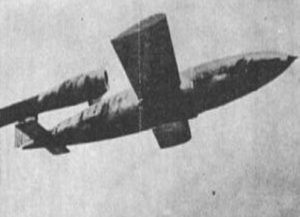
 Every time I research one of the weapons used in war, I am more and more stunned by the hatred that brings the need to destroy one another. During World War II, Hitler continuously created…or rather had his scientists create newer, more powerful, and more devastating bombs. His V-1 missile, also known as the V-1 flying bomb, or in German: Vergeltungswaffe 1, meaning “Vengeance Weapon 1” became known to the Allies as the buzz bomb, or doodlebug. In Germany it was known as Kirschkern, or cherrystone, and as Maikäfer or maybug. It was an early cruise missile, and also the first production aircraft to use a pulsejet for power.
Every time I research one of the weapons used in war, I am more and more stunned by the hatred that brings the need to destroy one another. During World War II, Hitler continuously created…or rather had his scientists create newer, more powerful, and more devastating bombs. His V-1 missile, also known as the V-1 flying bomb, or in German: Vergeltungswaffe 1, meaning “Vengeance Weapon 1” became known to the Allies as the buzz bomb, or doodlebug. In Germany it was known as Kirschkern, or cherrystone, and as Maikäfer or maybug. It was an early cruise missile, and also the first production aircraft to use a pulsejet for power.
The V-1 was developed at Peenemünde Army Research Center by the Nazi German Luftwaffe during World War II. During initial development it was known by the codename “Cherry Stone.” It was first of the so-called “Vengeance weapons” (V-weapons or Vergeltungswaffen) series designed for terror bombing of London. As one of my readers, Greg (sorry, I don’t know his last name) pointed out to me, it was one of the V weapons…the V-3 to be exact that would ultimately cause the death of Joseph Kennedy, but that is a story for another day. The range of the V-1 missile was limited, and so the thousands of V-1 missiles launched into England were fired from launch facilities along the French (Pas-de-Calais) and Dutch coasts. The first V-1 was launched at London on 13 June 1944, one week after, and actually prompted by the successful Allied landings in Europe. At its peak, more than one hundred V-1s a day were fired at south-east England, 9,521 in total, decreasing in number as sites were overrun until October 1944, when the last V-1 site in range of Britain was overrun by Allied forces. After this, the V-1s were directed at the port of Antwerp and other targets in Belgium, with 2,448 V-1s being launched. The attacks stopped only a month before the war in Europe ended, when the last launch site in the Low Countries was overrun on March 29, 1945.
It took a V-1 about 15 minutes to travel from its launch pad in Calais, France to the heart of London…a distance of nearly 95 miles. Nearly 10,000 V-1s were launched from sites in Northern France over an 80 day period beginning in June 1944. Their targets included London, as well as other cities in southern England. At the peak of the bombing, more than 100 rockets were hitting Britain daily. Casualties climbed to 22,000 people, with more than 6,000 of them fatalities. Hitler hoped his new weapons would crush British morale, bringing 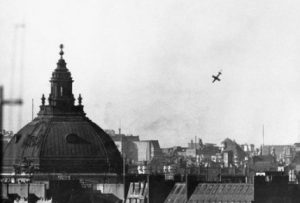
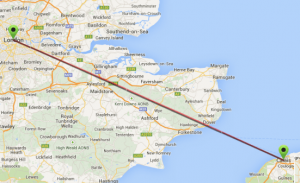 surrender. More V-1s would later be fired from inside Germany itself at Liege and the port of Antwerp. Hitler had underestimated the British, however. The British operated an arrangement of air defenses, including anti-aircraft guns and fighter aircraft, to intercept the bombs before they reached their targets as part of Operation Crossbow, while the launch sites and underground V-1 storage depots were targets of strategic bombings.
surrender. More V-1s would later be fired from inside Germany itself at Liege and the port of Antwerp. Hitler had underestimated the British, however. The British operated an arrangement of air defenses, including anti-aircraft guns and fighter aircraft, to intercept the bombs before they reached their targets as part of Operation Crossbow, while the launch sites and underground V-1 storage depots were targets of strategic bombings.

